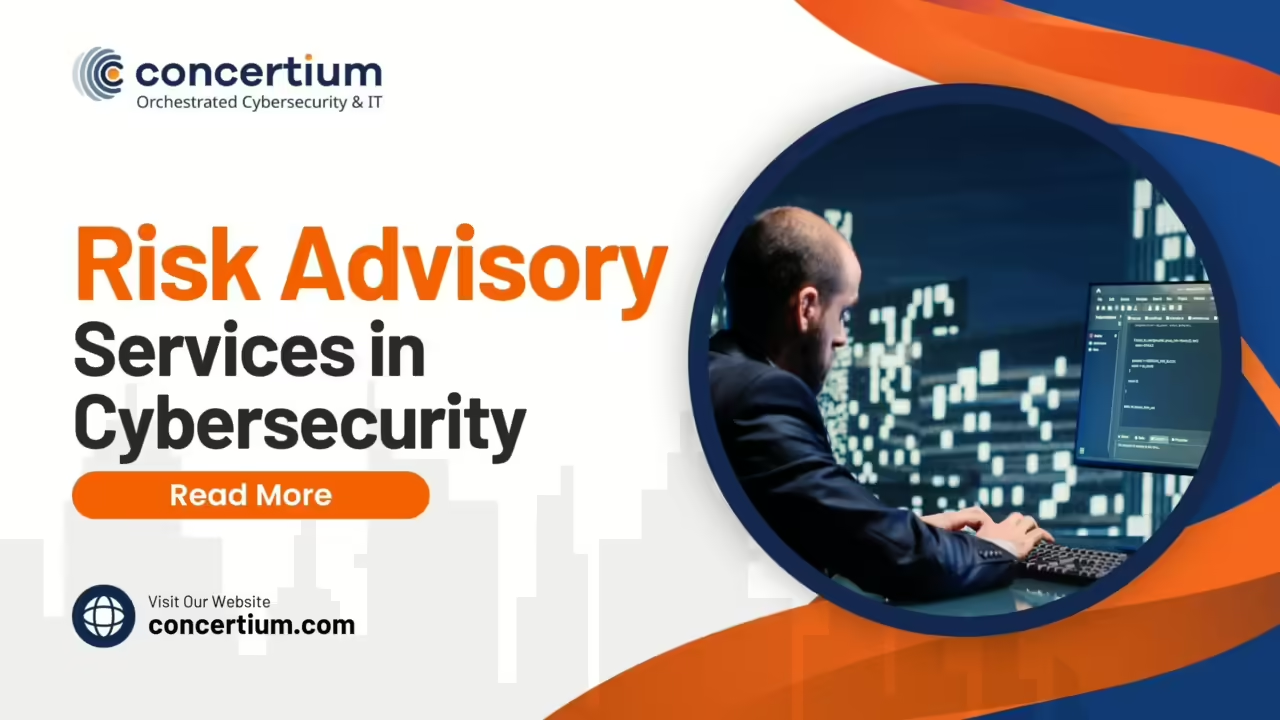Risk Advisory Services in Cybersecurity
Cybersecurity is the practice of protecting systems, networks, and programs from digital attacks. These attacks often aim to access, change, or destroy sensitive information; extort money from users; or interrupt normal business processes. Cybersecurity is crucial because it encompasses everything that pertains to protecting sensitive data, personally identifiable information, protected health information, intellectual property, and governmental and industry information systems from theft and damage attempted by criminals and adversaries.
Risk advisory services in cybersecurity play a pivotal role in safeguarding organizations against cyber threats. These services help businesses identify potential vulnerabilities, assess risks, and implement strategies to mitigate these risks. They offer a comprehensive approach to managing cyber risks, ensuring that organizations can operate securely and efficiently.
The purpose of this article is to explore the role of ongoing compliance and risk advisory services in cybersecurity. We will delve into their definition, importance, key components, and the benefits they bring to modern businesses. This guide aims to provide valuable insights into how these services can enhance an organization’s security posture and ensure compliance with regulatory standards.
Understanding Risk Advisory Services in Cybersecurity
Definition and Scope
Risk advisory services in cybersecurity involve a systematic process of identifying, assessing, and mitigating cyber risks that could potentially harm an organization. These services are provided by experts who have a deep understanding of the cyber threat landscape and are skilled in implementing risk management strategies.
The scope of risk advisory services is broad. It encompasses risk assessment, compliance management, incident response planning, and continuous monitoring. These services are designed to provide organizations with a holistic view of their cyber risk profile and offer tailored solutions to address specific vulnerabilities. For instance, risk advisory services help businesses prioritize their security efforts, ensuring that resources are allocated to the most critical areas.
Importance in Modern Cybersecurity Landscape
In rapidly evolving cybersecurity landscape, businesses face a myriad of threats that can disrupt operations and compromise sensitive data. Therefore, risk advisory services are crucial for any organization looking to protect itself from these threats. These services provide a structured approach to identifying and mitigating risks, ensuring that organizations can stay ahead of potential cyber threats.
The benefits of risk advisory services are manifold. Firstly, they help businesses achieve compliance with regulatory requirements, which is essential for avoiding legal penalties and maintaining customer trust. Additionally, these services enhance an organization’s resilience by identifying and addressing vulnerabilities before they can be exploited. Above all, risk advisory services enable organizations to respond effectively to incidents, minimizing damage and ensuring a swift recovery.
Key Components of Risk Advisory Services
Risk Assessment
Risk assessment is a fundamental component of risk advisory services. It involves identifying potential risks that could impact an organization’s cybersecurity posture. This process typically includes a thorough examination of the organization’s assets, vulnerabilities, and potential threats.
The steps involved in risk assessment are straightforward yet critical. First, organizations need to identify their critical assets and determine their value. Next, they must identify potential threats and vulnerabilities that could affect these assets. After that, the likelihood and impact of each risk are assessed to prioritize them. Finally, organizations develop strategies to mitigate the identified risks, ensuring that the most critical vulnerabilities are addressed first.
Compliance Management
Compliance management is another key aspect of risk advisory services. In the context of cybersecurity, compliance refers to adhering to regulatory standards and frameworks designed to protect sensitive information and ensure the security of digital systems. These regulations may include GDPR, HIPAA, or industry-specific standards like PCI-DSS.
The role of risk advisory services in compliance management is significant. These services help organizations understand the specific regulatory requirements that apply to them and develop strategies to meet these standards. In other words, risk advisors act as guides, ensuring that businesses implement the necessary controls and processes to achieve and maintain compliance. This not only helps in avoiding legal penalties but also enhances the overall security posture of the organization.
Incident Response Planning
Incident response planning is a critical component of risk advisory services. It involves preparing for potential cyber incidents and developing strategies to respond effectively when they occur. This ensures that organizations can minimize the impact of a breach and recover quickly.
The definition of incident response planning is straightforward: it is the process of creating a structured approach to handling security incidents. This includes identifying potential incidents, establishing a response team, and developing a communication plan.
Risk advisory services play a crucial role in this process by helping organizations develop comprehensive incident response plans tailored to their specific needs. These plans outline the steps to take in the event of a breach, ensuring a coordinated and effective response.
Continuous Monitoring and Improvement
Continuous monitoring and improvement are essential for maintaining a robust cybersecurity posture. In the ever-evolving cyber threat landscape, it is vital for organizations to continuously monitor their systems for potential vulnerabilities and threats.
The importance of continuous monitoring cannot be overstated. It allows organizations to detect and respond to threats in real-time, minimizing the potential impact of cyber incidents. Moreover, continuous improvement ensures that security measures are regularly updated to address new and emerging threats.
Risk advisory services provide the expertise and tools necessary for effective continuous monitoring and improvement, helping organizations stay ahead of cyber threats and maintain a resilient security posture.
Benefits of Ongoing Compliance & Risk Advisory Services
Enhanced Security Posture
Risk advisory services significantly enhance an organization’s security posture. By continuously identifying and mitigating potential threats, these services help organizations stay ahead of cybercriminals. For instance, risk advisors implement proactive security measures like regular penetration testing and vulnerability assessments, ensuring that systems remain secure against evolving threats.
Enhanced security measures include multi-factor authentication, robust firewalls, and advanced encryption techniques. These measures help protect sensitive data from unauthorized access and reduce the risk of data breaches. Additionally, risk advisory services offer continuous monitoring, allowing for real-time detection and response to cyber threats. Therefore, organizations can swiftly address security incidents, minimizing potential damage and recovery time.
Regulatory Compliance
Regulatory compliance is crucial in today’s cybersecurity landscape. Organizations must adhere to various regulations, such as GDPR, HIPAA, and the NIST Cybersecurity Framework. Compliance ensures that businesses protect sensitive data and maintain customer trust. Risk advisory services play a vital role in helping organizations navigate these complex regulatory requirements.
Risk and compliance advisors assist businesses in understanding and implementing the necessary controls to meet regulatory standards. For instance, they help organizations develop robust data privacy policies and procedures, ensuring compliance with GDPR requirements. Moreover, risk advisory services provide regular audits and assessments to identify compliance gaps and recommend corrective actions.
Above all, maintaining regulatory compliance reduces the risk of legal penalties and enhances an organization’s reputation. By leveraging the expertise of risk advisory services, businesses can stay ahead of regulatory changes and ensure ongoing compliance. This proactive approach not only mitigates risks but also strengthens the overall security posture of the organization.
Cost Savings
Investing in risk advisory services can lead to significant cost savings for organizations. By identifying and mitigating risks early, businesses can avoid the high costs associated with data breaches and cyberattacks. For example, the average cost of a data breach can reach millions of dollars, including expenses related to remediation, legal fees, and reputational damage.
Risk advisory services help organizations implement cost-effective cybersecurity strategies that reduce overall risk exposure. For instance, they assist in prioritizing security investments, ensuring that resources are allocated to the most critical areas. In addition, risk advisors provide guidance on implementing cost-efficient security measures, such as cloud-based solutions and automated monitoring tools.
Challenges in Implementing Risk Advisory Services
Identifying the Right Service Provider
Selecting the right risk advisory service provider is crucial for the success of a cybersecurity program. Organizations need to consider several criteria when choosing a provider, such as expertise, reputation, and the range of services offered. It is essential to select a provider with a proven track record in cyber risk management and a deep understanding of the organization’s industry.
Common pitfalls to avoid include choosing providers based solely on cost or failing to assess their capabilities thoroughly. Organizations should conduct comprehensive evaluations, including reviewing client testimonials and case studies. Additionally, it is crucial to ensure that the provider offers customized solutions tailored to the organization’s unique risk profile.
Furthermore, businesses should look for providers that offer a collaborative approach, working closely with internal teams to develop and implement effective risk management strategies. By selecting the right service provider, organizations can enhance their security posture and achieve better outcomes in their cybersecurity programs.
Integration with Existing Systems
Integrating advisory services with existing systems can be challenging. Organizations often face difficulties in aligning new security measures with their current infrastructure. However, effective integration is essential for achieving a comprehensive cybersecurity strategy.
One of the primary challenges is ensuring compatibility between existing systems and new security tools. Organizations must conduct thorough assessments to identify potential integration issues and develop solutions to address them. For instance, businesses can leverage APIs and middleware to facilitate seamless integration between different systems.
Another challenge is managing the complexity of multiple security solutions. Organizations need to ensure that all tools and processes work together harmoniously, providing a unified approach to risk management. Best practices include developing detailed integration plans, conducting regular testing, and providing training to employees.
Maintaining Ongoing Compliance
Maintaining ongoing compliance is a continuous challenge for organizations. Regulatory requirements frequently change, and businesses must adapt to stay compliant. However, consistent compliance is essential for protecting sensitive data and avoiding legal penalties.
One of the primary challenges is keeping up with evolving regulations. Organizations need to stay informed about changes in regulatory standards and update their policies and procedures accordingly. Risk advisory services play a critical role in this process by providing regular updates and guidance on regulatory changes.
Another challenge is ensuring that compliance activities are integrated into daily operations. Organizations must develop robust compliance programs that include regular audits, employee training, and continuous monitoring. Advisory services help businesses implement these programs effectively, ensuring ongoing compliance.
Strategies for maintaining compliance include developing a culture of security and compliance within the organization. This involves fostering a mindset of vigilance and accountability among employees. By prioritizing compliance and leveraging the expertise of risk advisors, organizations can achieve long-term compliance and enhance their overall security posture.
Future Trends in Risk Advisory Services
Technological Advancements
Emerging technologies are revolutionizing risk advisory services. Innovations such as artificial intelligence (AI) and machine learning are enhancing the capabilities of risk management solutions. These technologies enable organizations to analyze vast amounts of data quickly and accurately, identifying potential threats and vulnerabilities.
AI and machine learning algorithms can detect patterns and anomalies that traditional methods might miss. For instance, they can identify unusual network activity indicative of a cyberattack. By leveraging these technologies, risk advisory services provide more effective threat detection and response capabilities.
Evolving Threat Landscape
The threat landscape is constantly evolving, posing new challenges for organizations. Cybercriminals are becoming more sophisticated, employing advanced techniques to exploit vulnerabilities. Consequently, risk advisory services must adapt to address these emerging threats.
One of the key trends is the rise of targeted attacks, where cybercriminals focus on specific organizations or industries. These attacks often involve advanced tactics such as social engineering and zero-day exploits. Risk advisors must stay informed about these trends and develop strategies to counter them.
Another trend is the increasing use of ransomware, which can have devastating effects on businesses. Risk advisory services help organizations implement robust defenses against ransomware, including regular backups and employee training on recognizing phishing attempts.
Furthermore, the growing complexity of supply chains introduces additional risks. Organizations must ensure that their third-party vendors also adhere to strict security standards. Advisory services play a crucial role in managing these risks by conducting thorough assessments and implementing robust third-party risk management programs.
By staying ahead of these trends, risk advisory services help organizations mitigate risks and enhance their resilience against cyber threats.
Increased Regulatory Pressure
Regulatory pressure is increasing as governments and regulatory bodies introduce new standards to protect data and privacy. Upcoming regulations such as the California Privacy Rights Act (CPRA) and the ISO/IEC 27001 standard are expected to impact businesses significantly. Organizations must prepare to comply with these new requirements.
The impact of increased regulatory pressure is twofold. Firstly, organizations must invest in robust compliance programs to meet new standards. This includes updating policies, implementing new security controls, and conducting regular audits. Secondly, failure to comply with these regulations can result in severe penalties and reputational damage.
Risk advisory services provide the expertise and resources needed to navigate these regulatory changes. They help organizations understand new requirements, develop compliance strategies, and implement necessary controls. By leveraging the expertise of risk advisors, businesses can ensure ongoing compliance and avoid potential pitfalls.
In addition, organizations must adopt a proactive approach to regulatory changes. This involves staying informed about upcoming regulations and preparing in advance. By prioritizing compliance, businesses can mitigate risks and maintain a strong security posture in the face of increasing regulatory pressure.
Choosing the Right Risk Advisory Services for Your Business
Evaluating Your Needs
Before choosing a risk advisory service provider, it is essential to evaluate your business’s specific needs. This involves assessing your current cybersecurity posture, identifying potential risks, and determining the level of support required. For instance, a small business with limited resources may need more comprehensive services than a larger organization with an established security team.
Key questions to ask during this evaluation include: What are our most critical assets? What are the potential threats and vulnerabilities? What are our regulatory requirements? By answering these questions, organizations can gain a clear understanding of their needs and priorities.
In addition, it is crucial to consider the organization’s industry and unique risk profile. Different industries face different cyber threats and regulatory requirements. Therefore, the chosen provider must have expertise in the relevant industry and be able to offer tailored solutions.
By conducting a thorough needs assessment, businesses can ensure they select a risk advisory service provider that aligns with their specific requirements and objectives.
Comparing Providers
Comparing different risk advisory service providers is a critical step in selecting the right partner. Organizations need to consider several criteria, including the provider’s expertise, reputation, range of services, and cost. It is essential to choose a provider with a proven track record in cyber risk management.
Key criteria to consider include the provider’s experience in the industry, the qualifications of their advisory teams, and the comprehensiveness of their service offerings. For instance, some providers may specialize in specific areas such as compliance management or incident response, while others offer a broader range of services.
It is also important to review client testimonials and case studies to gauge the provider’s effectiveness and reliability. Red flags to watch out for include a lack of transparency, poor customer service, and limited customization options. Organizations should prioritize providers that offer personalized solutions and a collaborative approach.
By carefully comparing providers, businesses can select a risk advisory service partner that meets their specific needs and helps them achieve their cybersecurity objectives.
Key Takeaways and Next Steps
In conclusion, risk advisory services play a crucial role in enhancing an organization’s cybersecurity posture and ensuring regulatory compliance.
By leveraging these services, businesses can achieve significant benefits, including cost savings and improved security. It is essential to choose the right service provider and address challenges proactively to maximize the effectiveness of risk advisory services. With the right approach, organizations can stay ahead of cyber threats and maintain a resilient security posture.





